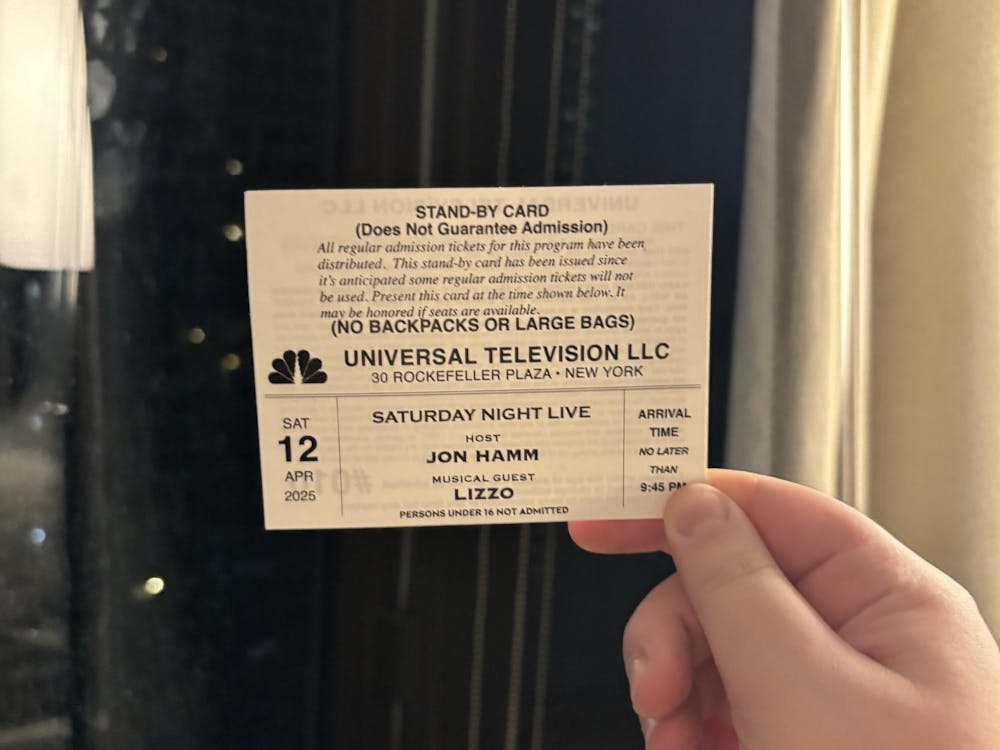There's a scene about halfway through "Ready Player One" in which the story's hero, Wade Watts (Tye Sheridan), is approached by the villain, corporate CEO Nolan Sorrento (Ben Mendelsohn). Both parties are after the same thing: total control of the virtual reality technology Oasis, which has become the most important economic resource in their dystopic future, as well as an amount of shares which equates to nearly half a trillion dollars. Wade wants to preserve the Oasis as a fun playground for geeks and everyday people alike, while Sorrento and his company, IOI, want to litter the platform with advertisements and monetization.
To sway Wade to join his side, Sorrento makes a lucrative offer alongside hollow promises that he, like Wade, is a nerd who enjoys the Oasis because it's a pop culture gold mine. He vows that the first thing he'll do in the Oasis is make models of high schools from John Hughes films. The irony is that these references are being fed to him through a headphone by a culture-savvy employee. Wade sees through Sorrento's facade, declaring in one of the film's cringeworthy moments, "a fanboy knows a hater!"
"Ready Player One" would like us to view it as we do Wade -- a huge fan of pop culture artifacts from decades past, dedicated to giving these characters and settings a place in its world. Unfortunately, the film often feels more like Sorrento -- a money-making entity only interested in these icons for their potential value with consumers. Listen carefully, and you can almost hear young crew members whispering references in director Steven Spielberg's ear, like when modern video game characters pop up with no context or when Wade (once again, cringingly) exclaims, "I've seen all her Twitch streams; she's the real deal!"
The film made waves upon its announcement with its copious amount of Easter eggs, but that's not all it's about, right? Well, it does have a story, but even that is a nostalgia trip. See, in order to get that half-trillion reward and control over the Oasis, players must solve three riddles and the subsequent challenges placed by the platform's creator, Halliday (Mark Rylance), who implemented this treasure hunt upon his death. He was also a total nerd, and his challenges are all based around references to film and video games, and only the most well-versed players -- in Halliday's personal life as well as his favorite flicks -- can solve them. The story makes way for even more references, though there is also some philosophical ponderance on the pull between the virtual world and reality (although the decision the screenplay comes to on this topic won't really surprise you).
This all sounds very negative toward a reference-centric story, but the 2011 book upon which the film is based is even more filled to the brim with nostalgia. However, it feels more organic on the page, perhaps because the specific references feel much more personal to the writer, Ernest Cline. The book serves as a love letter to the movies, music and games that made him want to create and helped define his life. There are certain moments of the film, largely the ones that don't stray too far from the source material, that capture this sense of passion and sentimentality.
But in its movement to the big screen, something is lost in translation. Many of the culture references -- the Iron Giant, King Kong, Mecha Godzilla, "The Shining" and many, many more -- feel tailored to garner appeal from as many audience members as possible, but in the process strips the icons of their original sentimental value. I love "The Iron Giant" because it's a touching, emotional tale of friendship and understanding. I don't care to see him beating up a bunch of other characters in a giant battle.
Of course, there are other elements to "Ready Player One:" plot, characters, world-building. Even then, the film is a mixed bag. Some of the performances are quite compelling. The most interesting character is Sorrento, a rather humorous antagonist whose worst (and funniest) qualities are defined by a highly fragile masculinity (his login password for the Oasis is B055man69). Also, Rylance does a stellar job as Halliday, who still features prominently in flashbacks and as his character's Oasis avatar. However, the main band of protagonists, the High Five, is unfortunately one-dimensional. Even the main character Wade leaves a lot to be desired in terms of characterization.
The plot hits all the beats of a typical Spielberg adventure. Since he's a master of the genre, there are some very good moments, especially in the third act. However, the beginning is bogged down by some exposition-heavy voice-overs that feel wooden and make you feel as if you need every little detail explained to you. And, while a lot of the film's humor is surprisingly effective, the love story between Wade and a mysterious fellow player named Art3mis (Olivia Cooke) is rushed and, as a result, wholly unbelievable.
In a time when a lot of companies are trying to capitalize on consumers' desire for nostalgia, "Ready Player One" feels like a natural progression. Where its source material mainly felt like genuine love letter to the artifacts of classic nerdom, at its worst, the adaptation feels like a zeitgeist cash grab in the most extreme sense.
keelinst@miamioh.edu



